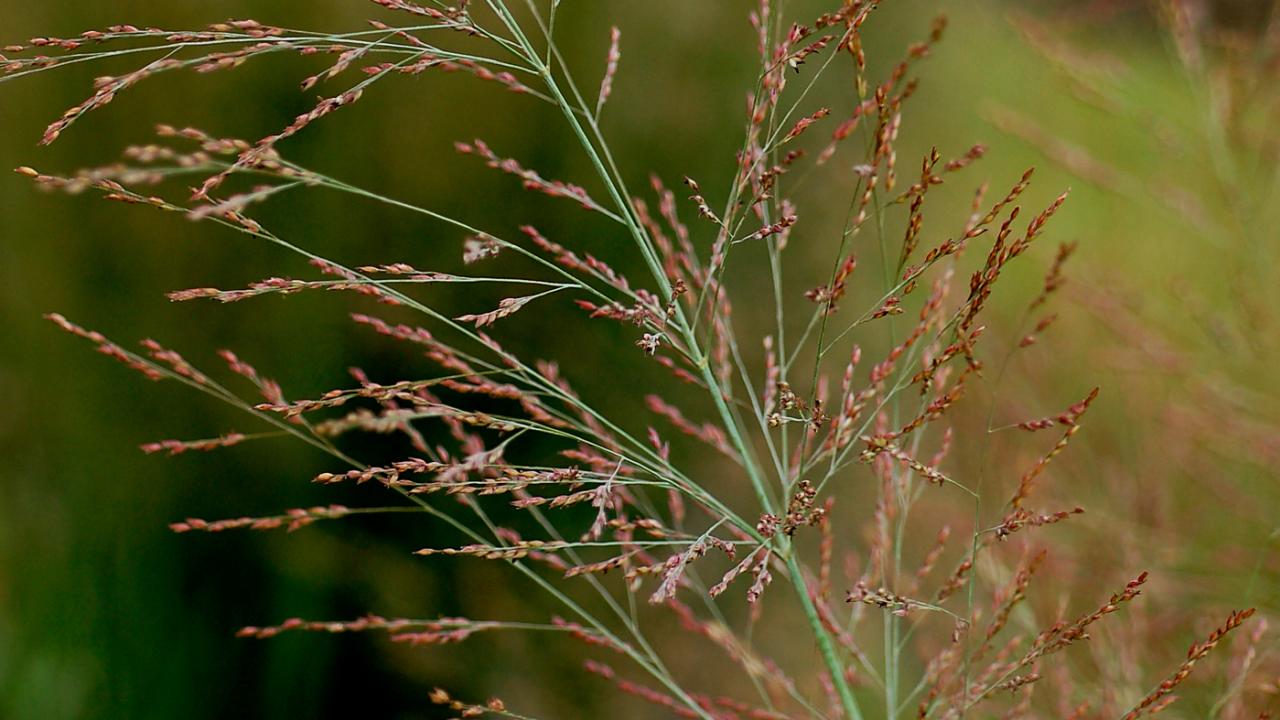

Plant Profiles
Basil
Ocimum basilicum
Basil (Ocimum basilicum) is one of the most popular herbs grown today. It is not only a flavorful ingredient in Italian, Chinese, French, and Thai cuisine, but it is also a fragrant, ornamental plant for gardens and containers. Easy to grow and tasty to eat, basil plants will add color and an aniselike fragrance to all flower and herb gardens.
Native to Africa and parts of Asia, basil is an extremely tender plant and is one of the first in the garden to succumb to frost. The large succulent leaves will darken and lose their characteristic flavor. To avoid basil's tendency to discolor and to retain its maximum freshness and flavor, many chefs refrain from adding basil to their dishes until immediately before serving.
Culture and Care
Basil plants require full sun and very well-drained, rich soil with even moisture. Their requirements are quite similar to those of the tomato, and the two plants are often paired together in gardens as they are in the kitchen.
When transplanting small plants to the garden, wait until all danger of frost has passed. Pinch off the top of the young plant to encourage bushy growth. Most basil varieties grow between 1 and 2 feet, so space your plants accordingly. The dwarf or tiny-leaved varieties grow in a mounding fashion, often much wider than tall. Pinch off developing flowers to concentrate the essential oils in the leaves.
Starting from Seed
To get a jump-start, start basil indoors from seed four to six weeks before the last frost date, May 15 in the Chicago area. Plant seeds either in a large seed tray or plant several seeds per 2-inch pot. Cover the seeds with 1/4 inch of potting mix. Moisten the potting mix by watering from below, and cover the seeds with plastic wrap to retain moisture. Keep the tray warm, and supply bottom heat if temperatures drop below 70 degrees. Germination should occur within one week. Then remove plastic wrap and place tray in a bright window or under lights. Rotate the tray for even growth. When seedlings have developed two sets of true leaves, transplant them into individual pots. Gradually introduce the small plants to outdoor conditions before finally planting them in the garden after May 15.
Harvesting Basil
Fresh basil is best harvested immediately before use. Individual leaves can be pinched off but plants will respond better if stems are removed by cutting right above a pair of lower leaves. The plant will produce new shoots at that point. Individual stems with leaves can be hung upside down to dry or leaves only can be blended into a slurry and frozen in ice cube trays. Avoid hanging groups of stems together since mold might develop.
By planting different types of basil in succession, you will have enough to garnish sauces, fresh salads, pastas, soups, and seafood dishes all season long. By freezing or drying your basil, you can enjoy its mellow flavor even when the snow flies.
Types of Basil
Although there are more than 30 different species of basil and dozens of cultivars, the best ones for growing and cooking are cultivars of Ocimum basilicum. The National Gardening Bureau classifies basil into four basic groups:
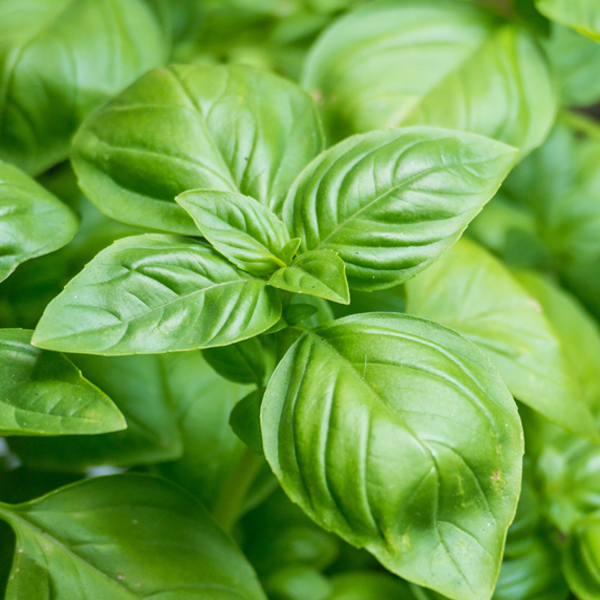
Sweet basil
(O. basilicum)
The most commonly planted of the basils and the most familiar to gardeners and cooks. The 2-foot plant features 2- to 3-inch bright green puckered leaves and spikes of white flowers. Recommended cultivars include 'Sweet Genovese' for its large leaves that are perfect for pesto, and 'Siam Queen', a purple-flowering variety with a stronger flavor and fragrance which also works well in hanging baskets.
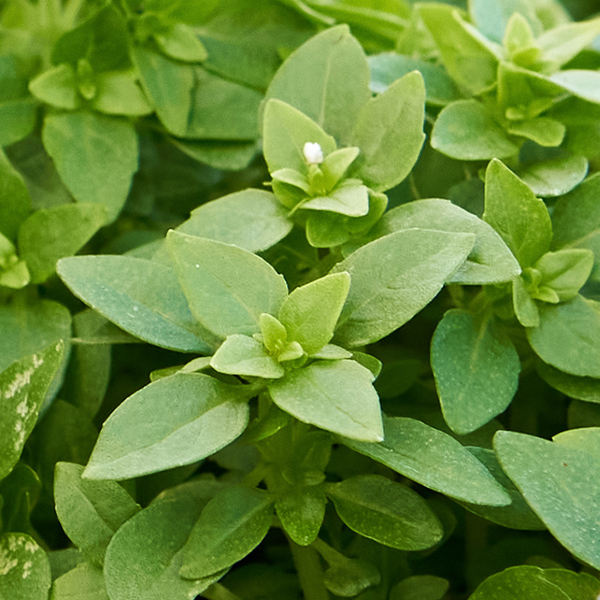
Dwarf basil
(O. basilicum 'Minimum')
It forms a 10-inch dome-shaped mound topped by white flowers. The leaves may be tiny but they are quite flavorful. Recommended cultivars include 'Spicy Globe' and 'Green Bouquet'.
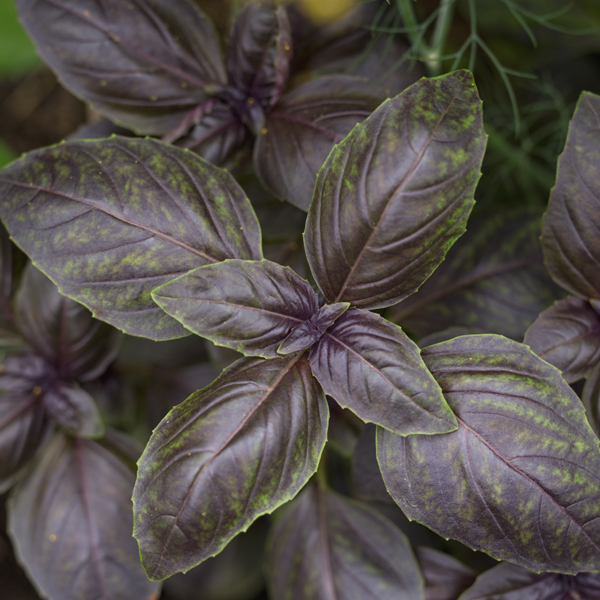
Purple-leaved basil
(O. b. purpurescens)
It is prized equally by growers of purple-foliaged annuals and chefs alike. Many of these highly decorative plants have ruffled or deeply cut burgundy to purple leaves. The plants produce bright pink to purple flowers. Tried and true varieties are 'Purple Ruffles', 'Dark Opal', and 'Red Rubin'.
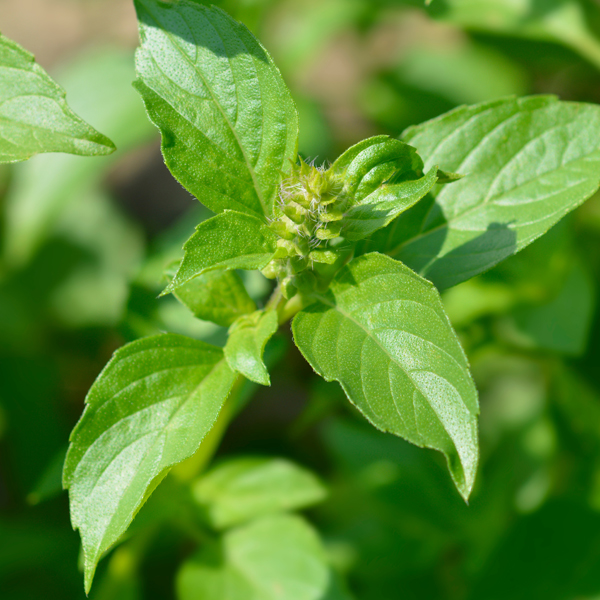
Scented-leaved basil
(O. b. var. citriodorum, O. americanum)
Whether your pleasure is lemon, lime, cinnamon, or pungent clove, the scented basils add a second scent to the original anise. Flower colors vary. Citrus basil leaves pair nicely with soups, fish, and sorbets.

